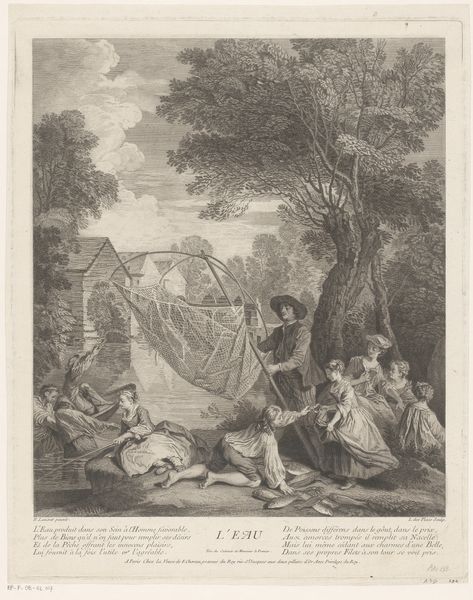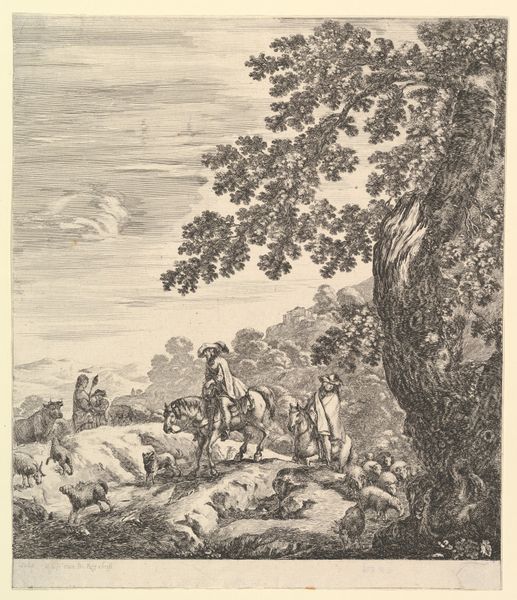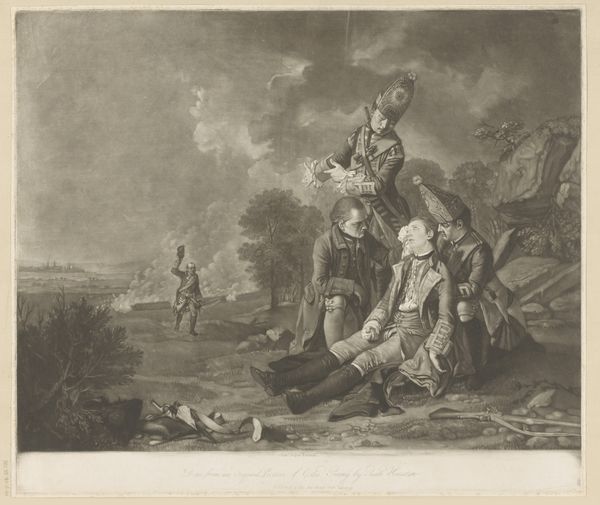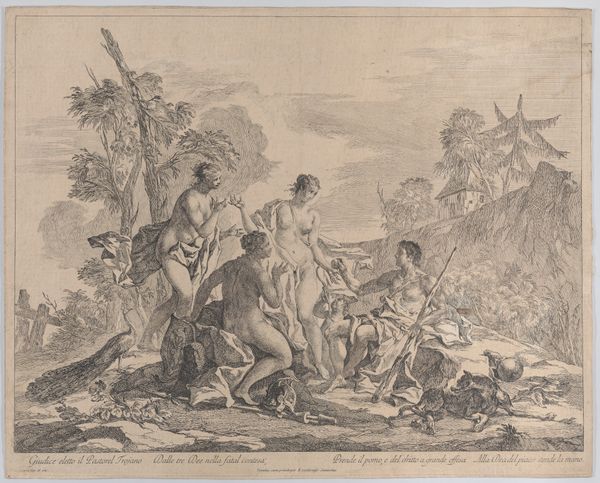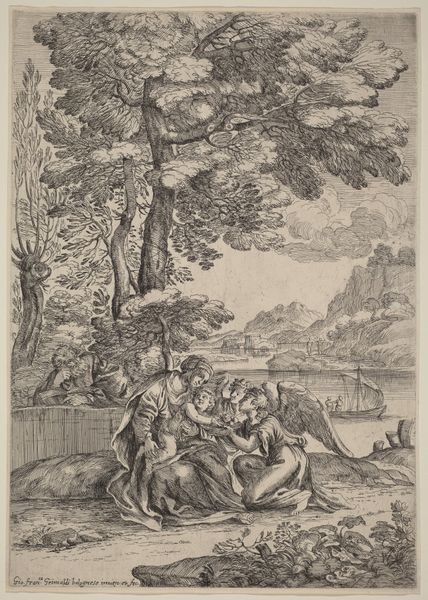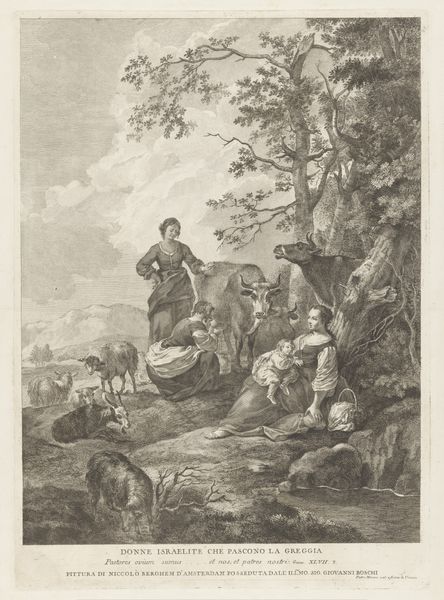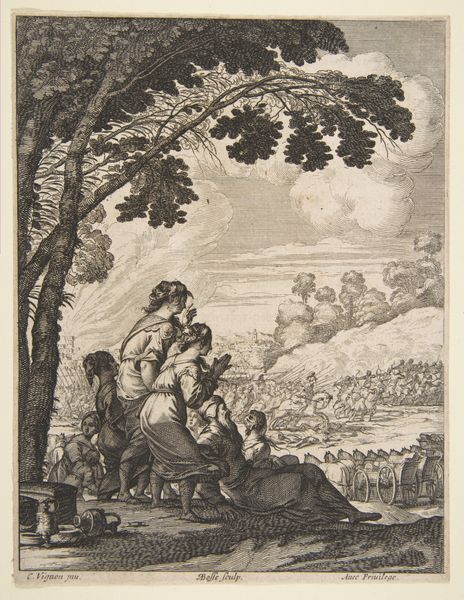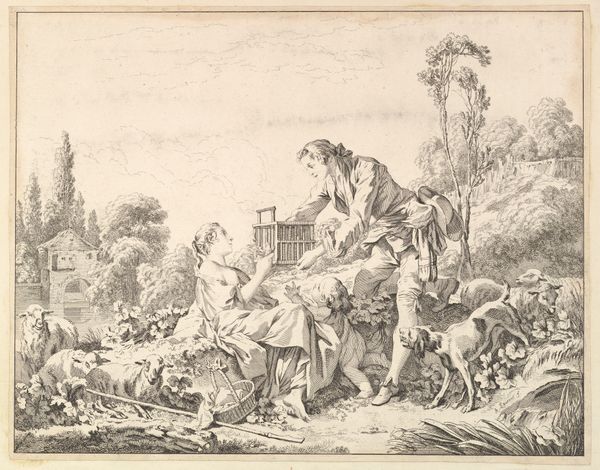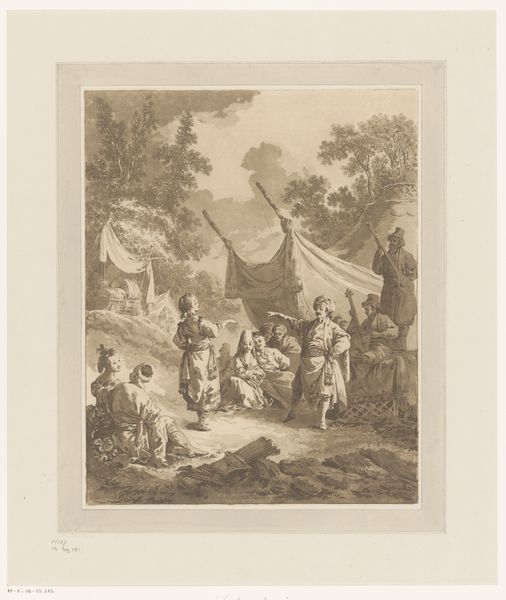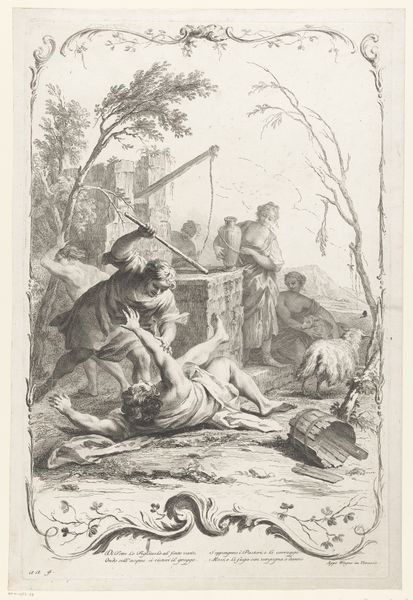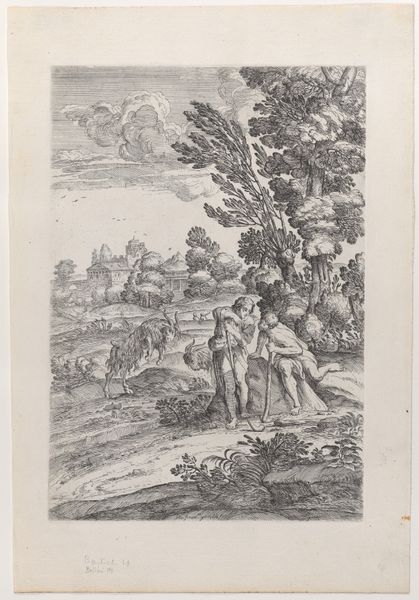
Plate XLIX: Pastoral scene with peasants napping, one resting on a woman under a tree, a soldier approaches at right; from 'Studi di pittura gia dissegnati da Giambatista Piazzetta' after Giovanni Battista Piazzetta 1720 - 1759
0:00
0:00
drawing, print, etching
#
drawing
#
narrative-art
#
baroque
# print
#
etching
#
landscape
#
figuration
#
genre-painting
#
italian-renaissance
Dimensions: Plate: 15 9/16 × 10 9/16 in. (39.5 × 26.8 cm) Sheet: 16 5/16 x 11 3/8 in. (41.4 x 28.9 cm)
Copyright: Public Domain
Curator: This is Plate XLIX from "Studi di pittura gia dissegnati da Giambatista Piazzetta" created sometime between 1720 and 1759. It's based on a drawing by Giovanni Battista Piazzetta, etched by Giuliano Giampiccoli. The scene presents us with an idealized pastoral moment, etched in intricate detail. What's your initial read? Editor: I’m immediately struck by the blatant class divisions represented, despite the pastoral theme. There's this idealized scene of leisurely peasantry disrupted by a soldier; that intrusion creates a strong tension. Who are these figures in relation to one another, and how does power manifest here? Curator: It’s interesting you see the interruption that way. Historically, genre scenes like these often served to romanticize rural life. But looking closer, the approach of a figure of authority introduces elements of potential disruption but is more interesting when viewed alongside the presence of cattle in a field, a domestic farm, with dogs at rest. Editor: Precisely, but romanticization can be a powerful form of ideological manipulation. Consider how such idyllic images might have been consumed by the aristocracy – reinforcing their sense of superiority while masking the realities of peasant labor and exploitation. Who exactly benefits from presenting this image of peasants "napping?" Is it simply documenting a quotidian activity? I’m not convinced. Curator: I see your point about potential readings from diverse audience positionalities. Still, Giampiccoli has rendered a classical landscape filled with interesting activity. I think one might see it as a narrative—the unexpected arrival disrupting a quiet afternoon and, to some, speaking to broader social conditions. Editor: I appreciate your attention to narrative, and how context shapes how we perceive images. Looking at it from today's perspective allows us to think about these representations through a more critical lens, interrogating power dynamics in supposedly benign settings. What were the labor laws at the time, who owned that land? And who gave the soldier the right to demand anything of anyone in this space? Curator: Exactly! The image speaks across centuries, provoking critical thought about social dynamics that unfortunately resonate still. We need to be sensitive when re-examining imagery, while remembering to consider these issues around representation. Editor: Agreed. Thank you for bringing it to our attention today and opening us to considering these crucial questions that remain pertinent today.
Comments
No comments
Be the first to comment and join the conversation on the ultimate creative platform.
